Demolition of the Former Matsumoto City Museum Begins
The Matsumoto Municipal Museum, located on Daimyocho Street in Matsumoto, was newly built and opened on October 7, 2023.
Prior to its relocation, the museum was located in Matsumoto Castle Park. The old building still remains today.
Demolition of the old museum has begun.
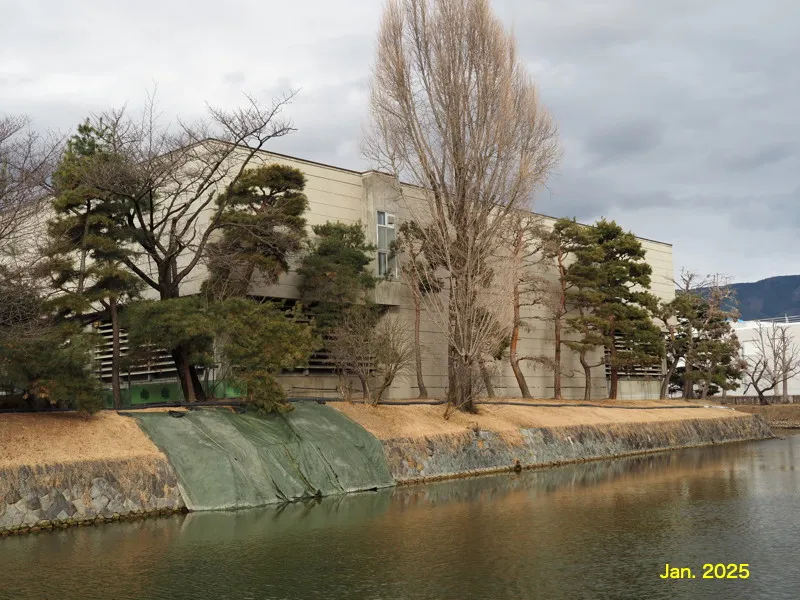
There was no work going on since it was a holiday when I took this photo, a demolition sign was posted at the entrance to the park and a steel-plated pathway was being built to allow work vehicles to pass through.
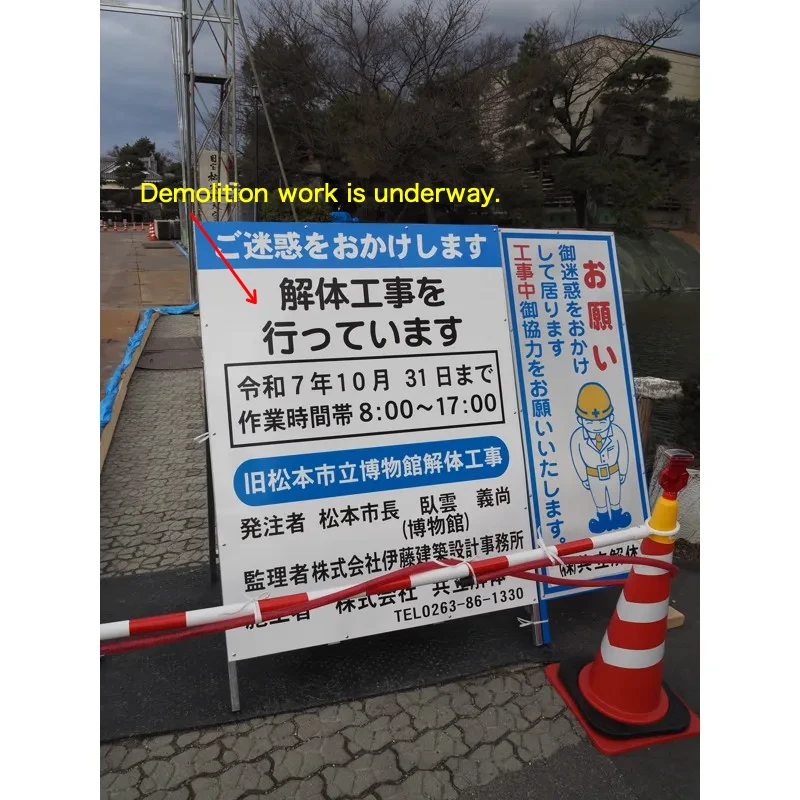
I will now write a description of this building.
The (old) Matsumoto City Museum had been located here, but around the 1960s, it was decided to build a new building, as an earthquake and fire resistant structure was desired for the storage and exhibition of materials.
The building is a reinforced concrete structure with two stories above ground and one below, and its height was determined in consideration of its location at the historic site of Matsumoto Castle, and its surface is finished with granite.
Construction began in the fall of 1966 and was completed in October 1967. After a period of internal drying and display preparation, the museum opened in April 1968.
As the construction of the new building, the museum was reorganized. The Japan Folklore Museum Foundation was established, and the museum building and its collection were donated to the Japan Folklore Museum.
The name of the building was changed to “Japan Folklore Museum,” but the name of the Matsumoto City Museum was also used.
(In 2005, the Japanese Folk Museum was dissolved and the facility was donated to the city of Matsumoto, so it has been called the Matsumoto City Museum ever since.)
First, let’s walk around the outside of the moat and look at the building.
This is the south side of the building.
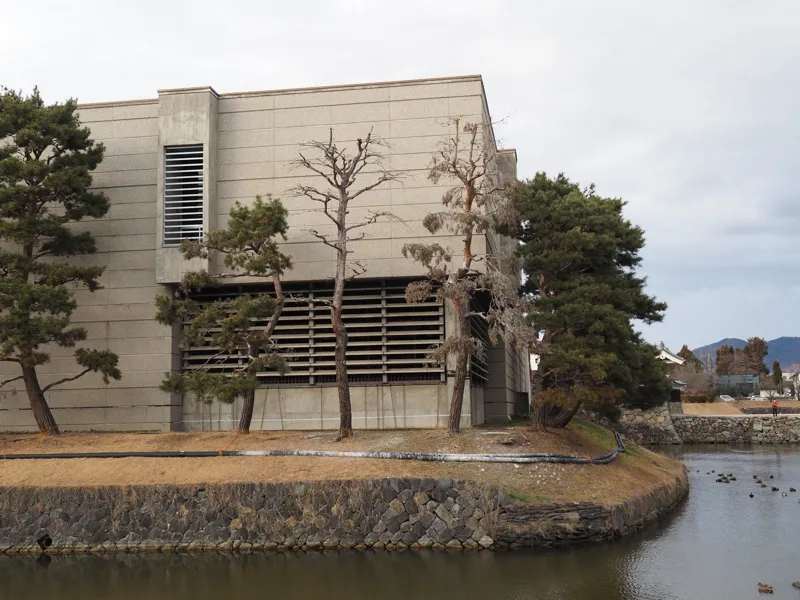
East side of the building.
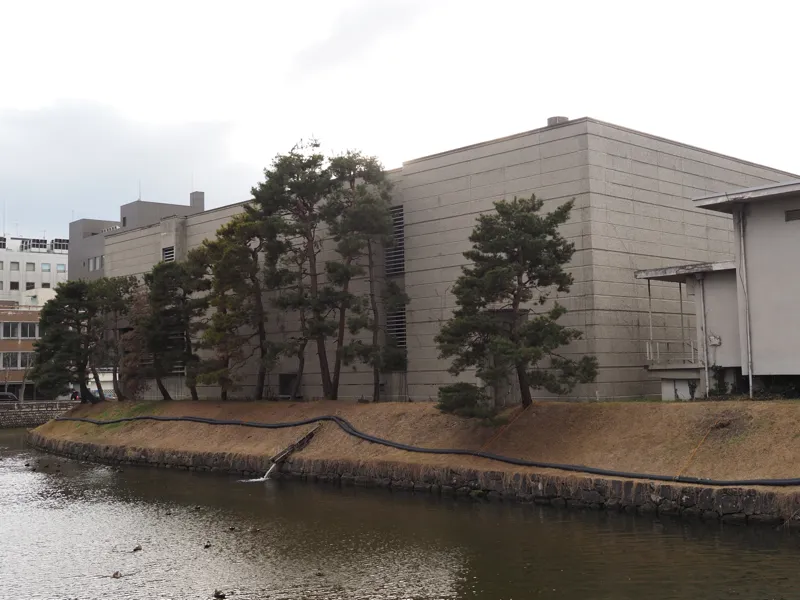
Here we cross the bridge and enter the castle park through Taiko-mon Gate.
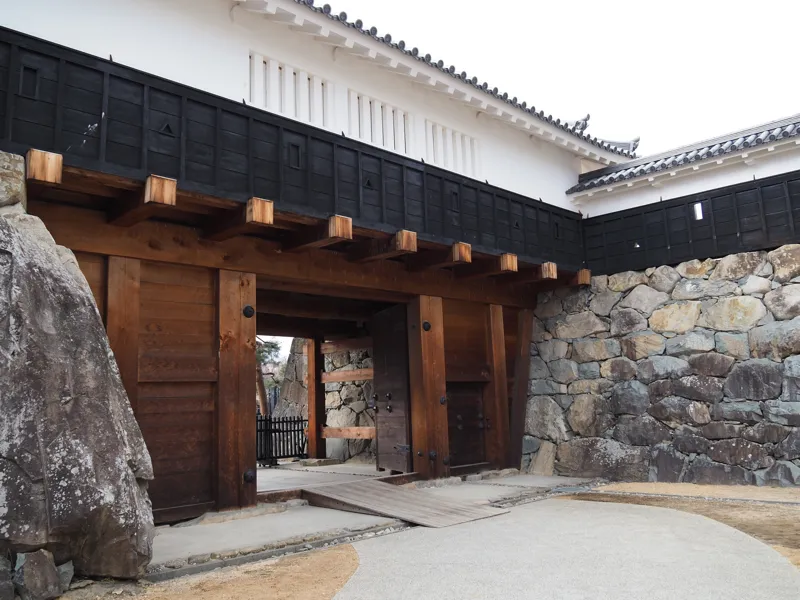
We are now on the north side of the building.
To the left of the main building is the storage room.
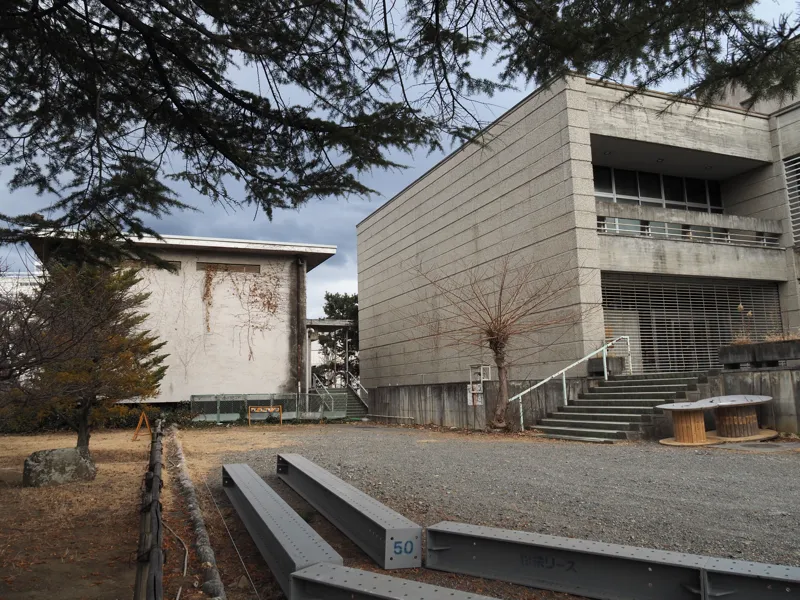
I wanted to get a little closer to it, but it was under construction and there was a partition, so I did not go inside.
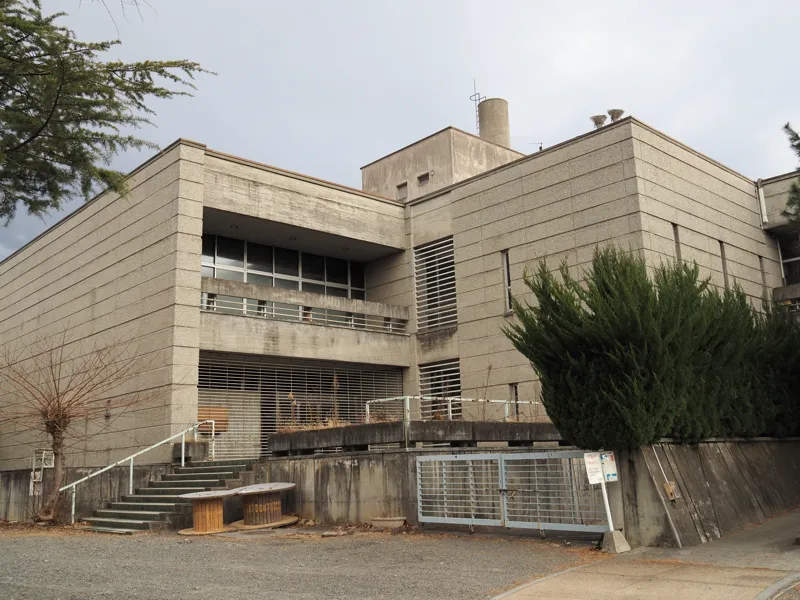
The front of the museum.
There was a truck parked in front of the museum, but no work was being done because it was a holiday.
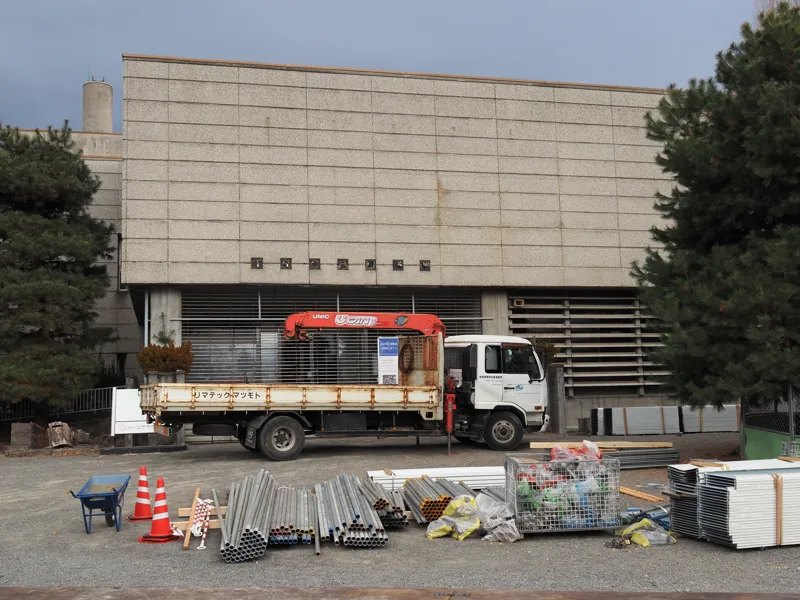
Let us look at the history of the Matsumoto City Museum.
The museum in Matsumoto City began as the “War Memorial Hall for the 37th and 38th Years of the Meiji Era,” which was established in 1906 in Matsumoto Senior Elementary School.
(Kaichi School changed its name to Matsumoto Elementary School in 1889.)
During the Russo-Japanese War in 1904, students and staff of Matsumoto Elementary School sent letters of comfort to several hundred soldiers from Matsumoto who had gone to war, and also comforted their families. Since many of the soldiers were either graduates of Matsumoto Elementary School or had received preparatory education from the school’s athletic department, they began sending letters, photographs, and Russian soldier’s accoutrements from the war zone in reply.
The school displayed these letters and items in one of the school’s rooms and made them available to the public.
After the war, the war trophies brought back by returning soldiers were also donated, amounting to several thousand items, so one building was constructed and opened as a memorial museum.
This is the “War Memorial Hall for the 37th and 8th Years of the Meiji Era” mentioned above.
In addition to war materials, the museum also houses 2,000 natural history specimens and 1,600 copies of books donated by citizens, and was opened to the public.
After the opening of the museum, local people donated armory and archaeological materials such as stone tools and earthenware.
Furthermore, in 1908 (Meiji 41), the Higashi-Chikuma County Institute of Educational Items was abolished and its items were also donated, and the museum was renamed the “Matsumoto Kinenkan” (Matsumoto Memorial Hall).
In 1928, when the elementary school was rebuilt, the museum was moved to the front gate of the school, and in 1931, it was transferred to Matsumoto City.
According to the 1935 issue of the journal “Museum Research,” the museum had a total of 13,262 items in its collection (2,281 arms-related items, 6,464 geographical items, and 4,517 natural history items), with 23,602 visitors in the previous year.
Around this time, there began to be calls for the renovation of the museum.
In 1935, Matsumoto Junior High School (old system), which had been located in the Ninomaru area of Matsumoto Castle, moved to a new school site. When the school building became vacant, the Matsumoto Kinenkan was moved to the old school building in 1937 and opened as a memorial hall the following year.
The museum’s exhibits were arranged as shown in the figure.
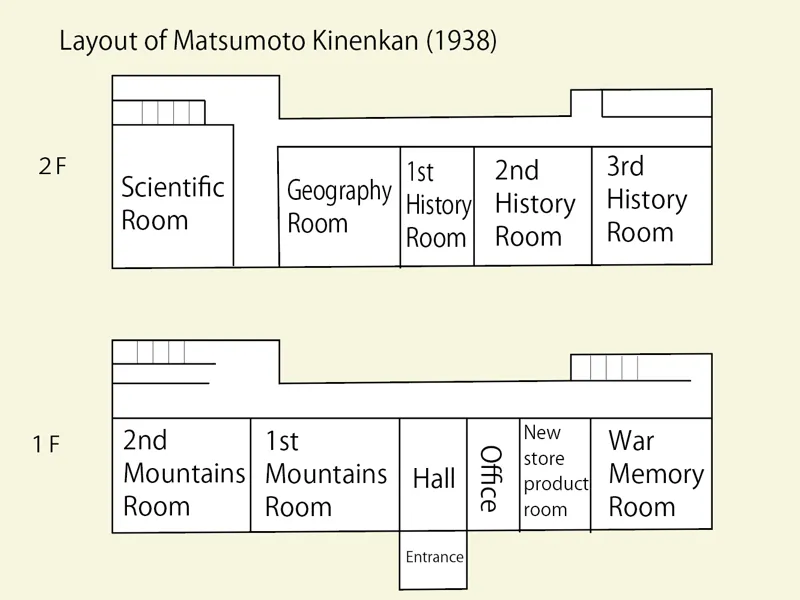
After the defeat of the war in 1945, the Kinenkan seemed to make an effort to get rid of its wartime color, as its predecessor was the War Memorial. 1947, the Kinenkan moved to the former girl’s vocational school building on the east side of the moat, and in 1948, it was renamed the Matsumoto City Museum.
The museum’s exhibits were divided into four permanent sections: mountain, archaeology, history, and folklore.
In 1952, the museum became a registered museum under the Museum Law, and in the same year moved again to the former Matsumoto Junior High School building in Ninomaru.
In 1961, the building was demolished, and construction of the new building began on the site.
This is the Former Matsumoto City Museum (former Museum of Japanese Folklore), which is the subject of this article.
The demolition of the old museum is scheduled to last until October 31, 2025. I would like to observe the demolition status from time to time.
[Reference] (All written in Japanese)
“Sixty Years of Municipal Government” (Matsumoto City / 1969)
“Matsumoto City Education Association Centennial Magazine” (Edited by Matsumoto City Education Association Centennial Magazine Editorial Committee / Matsumoto City Education Association / 1984)
“Matsumoto City Museum (Japan Folklore Museum), General Guide to the Former Kaichi School" (Matsumoto City Museum/1986)
“Bulletin of museology, Kokugakuin University 12” (Kokugakuin University Museum Studies Office/1987)
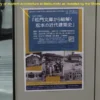
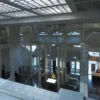
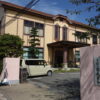
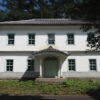
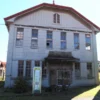
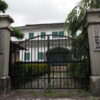
Discussion
New Comments
No comments yet. Be the first one!